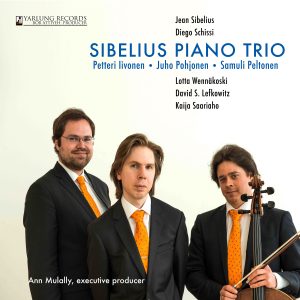Ernst Ottensamer, Daniel Ottensamer, Andreas Ottensamer (clarinets)
with Wiener Virtuosen
Mozart, Mendelssohn, Rossini, Ponchielli et al
DGG 481 19172
TPT: 56’ 50”
reviewed by Rosalind Appleby

“We know what our partners will do a millisecond before they do it”, says Andreas Ottensamer, the youngest member of The Clarinotts. “It’s a luxury you’ll rarely have with any other ensemble”.
The incredible cohesion between the three clarinetists is what struck me on a ‘blind’ listen to The Clarinotts album – that and their uncannily similar sound quality. It made sense when I had a closer look at the performers and realised it was Ernst Ottensamer in ensemble with his sons, the famous Viennese ‘Royal Family of the Clarinet’.
Ernst Ottensamer is being mourned around the world after dying tragically of a heart attack on 22 July. He was only 62. Ernst was principal clarinet in the Wiener Phiharmoniker from 1983 and founding member of the Wiener Blaserensemble and Wiener Virtuosen.
Ernst inspired a generation of clarinettists around the world, including his own children. His eldest son Daniel became co-principal clarinet in the Vienna Philharmonic alongside his father, and his youngest son Andreas is principal clarinet in the Berlin Philharmonic. Together, the three of them formed The Clarinotts, releasing their first album in 2009 and their second in 2016.
The 2016 self-titled album opens with Mendelssohn’s sparkling Concert Piece No 1 for clarinet, basset horn and orchestra. The brilliant duet was composed rather appropriately for the father-son duo of Heinrich and Carl Baermann. It is full of dazzling operatic writing and I was struck by the warm, full bodied sound of the basset horn and clarinet – and the driving energy of their playing.
The album’s repertoire traces Ernst’s career trajectory including his time in the pit of the Vienna State Opera with works like the trio Soave sia il vento from Mozart’s Cosi fan tutte and the Fantasy on themes from Verdi’s Rigoletto by Franz and Karl Doppler. Dance-style works also get a look in with Rossini’s La danza quoting from the overture to William Tell and the sentimental French-style waltz of Cantilene from Francaix’s Petit Quatuor.
Ponchielli’s Il Convegno has both sweetness and fire. Andreas and Daniel perform with extraordinary precision, their virtuosic runs, flourishes and dramatic rubato perfectly synchronised.
As you would expect, this is an album of great finesse and class, accompanied by none other than the Wiener Virtuosen, an ensemble made up of the section principals of the Wiener Philharmoniker. They are certainly some of the best players for the romantic/early 20th century repertoire that dominates the first half of the album.
Bela Koreny’s Cinema I is based on the plot of Paul Verhoeven’s film Basic Instinct and you can feel the intrigues and the tension in Ernst’s spooky bass clarinet and the wails of Andreas’ and Daniel’s clarinets over the top, accompanied by the Wiener Virtuosen with Christoph Traxler on piano. The bossa nova tune Morning of the Carnival by Luiz Bonfa was another contrast; slick and sultry.
A comment for clarinet nerds: check out the almost inaudible articulation from all three. It sounds like diaphragm articulation but it has the even attack of tonguing, generating sublimely clean playing.
The richness of this album is the synergy of three virtuosic clarinetists who really do seem to be of one mind: it sounds like one person multi-tracking! But what makes it really gripping listening are the energy and emotion the Ottensamer family bring to their music making. They really pull out all the stops in Olivier Truan’s unaccompanied trio The Chase and it’s an exhilarating conclusion to the album. Turns out, it is also a fitting final bow from Ernst Ottensamer; a testimony to a life spent sharing music with excellence and passion.











